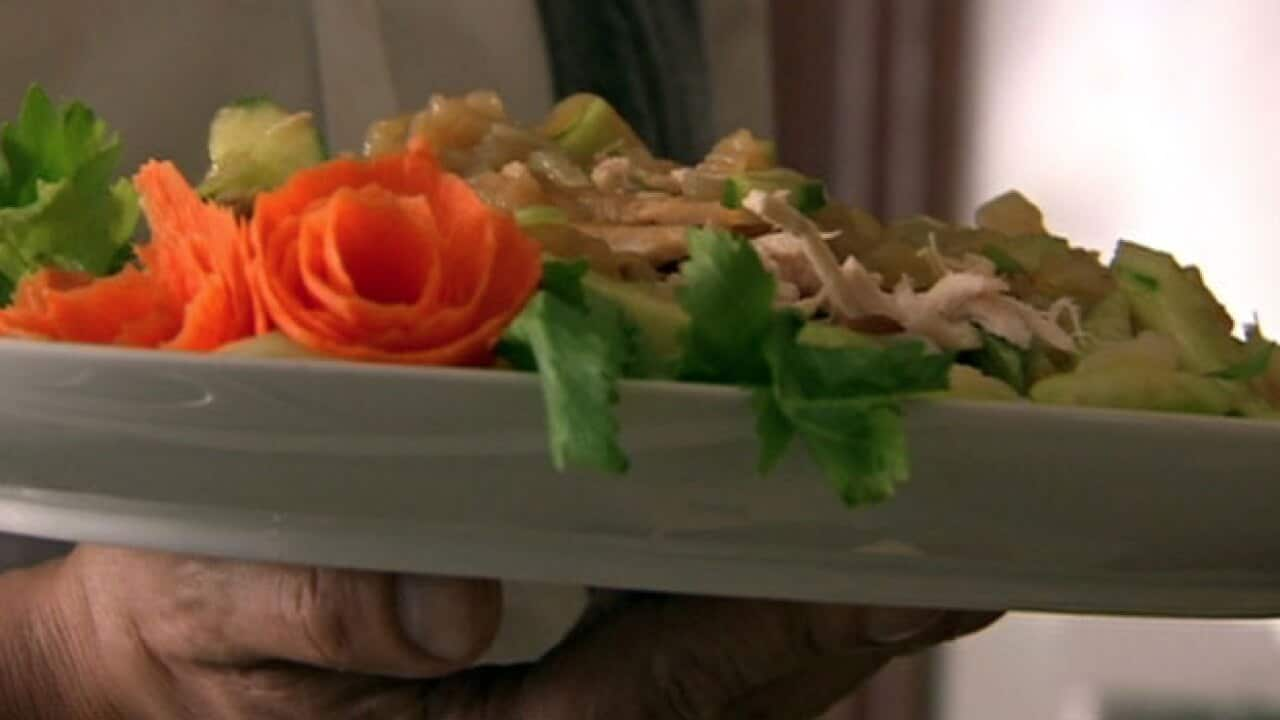A bunch of Italian scientists are trying to convince people to add jellyfish to their diet.
“There’s no way to eradicate jellyfish blooms,” , a zoology professor at the in Italy, tells SBS Food. “It’s worth transforming a problem into an opportunity.”
The jellyfish population is increasing rapidly, including in the Mediterranean Sea, and is causing havoc around the world. The overpopulation has , and .
Piraino has been working on a suite of studies that analyse the population dynamics and compositions of jellyfish.
He collaborates with biologist Antonella Leone, who has just begun a new one looking into the nutritional properties of the Mediterranean jellyfish species. It's part of the , which is investigating the potential sustainable use of the organisms.
Another Italian scientist, Silvio Greco, the research director at the Italian National Institute for Environmental Protection and Research (ISPRA), organises jellyfish taste-testing events such as one at the Slow Fish Festival, which is held every two years in Genoa in the northwest of the country.
He says he's doing this to help cut back on the overpopulation and because they're healthy.
Australians were sometimes curious, sometimes scared to try it.
They're low in calories and fat, and rich in protein and collagen. The little fat it contains is the essential omega-3 and omega-6 unsaturated fatty acids.
About 25 to 30 species of jellyfish in the world are edible, including a few in Australian waters.
A delicacy in Asia
Eating jellyfish is nothing new in some parts of the world. It’s been consumed for hundreds of years in many Asian countries, usually in a salad, cold or pickled.
“I was a big eater of jellyfish when I was in China,” says Chris Yan, executive chef across the in Sydney.
“Thirty years ago, people ate jellyfish on special occasions, like weddings, birthdays and festivals, because it was expensive. These days, jellyfish has become a common dish on the dining table.”
He’s put it on the menu at before, in a salad with celery, shallots and a soy and sesame dressing. While most Chinese customers loved the dish, Australians were sometimes curious, sometimes scared to try it, he says.
GOOD FOR YOUR HEALTH

Jellyfish salad
How to make jellyfish a popular food
In New Zealand, chef Jacob Brown, who has been cooking with jellyfish for a few years at his Wellington restaurant , has found a way to help acquaint people who are not so sure.
“People are not necessarily open to eating jellyfish on its own so I tend to use it mixed with whitebait,” he says.
CSIRO researcher Lisa-Ann Gershwin says people tend to enjoy the novelty aspect of them:
“You go to a Chinese restaurant and if jellyfish is on the menu, you might want to try it as an exciting thing, but it’s not something you’ll eat regularly.”
She thinks the endorsement of a celebrity chef or the use of jellyfish on a TV show like MasterChef Australia could entice more people to eat them.
“All of a sudden, it would be something trendy and yummy and a slimming protein,” she says.
On top of being sustainable, eating jellyfish is incredibly healthy: low in calories and fat, and rich in protein and collagen.
Chris Yan still believes that eating jellyfish could take off in Australia, especially if people were aware about how healthy it is.
He even says he can’t take it off his menu because people travel to his restaurant especially to try that dish.
“Eighty per cent of people are really surprised by how inoffensive it is and how textural it is. People are getting more and more adventurous with food.”
How and where to eat it
Jellyfish has a very delicate flavour, sometimes a bit salty. It’s more about the texture, somewhere between a cucumber and a glass noodle, not as gelatinous as you might expect.
To try it out, head to a Chinese, Vietnamese or Japanese restaurant. You’ll often see it on the menu and on trolleys at yum cha in salads with chicken or duck.
If you want to prepare it at home, the easiest way is to buy packaged jellyfish from an Asian supermarket.
“It’s usually been pre-sliced and dried in the sun,” says New Zealand chef Jacob Brown.
“You blanch it from cold water to hot water, at least five to seven times to clean it up”.
“I warm it and add garlic, lemon juice and some kind of vinegar. It’s almost like a jellyfish pickle. You have the crunchiness and the acid to balance it out.”





